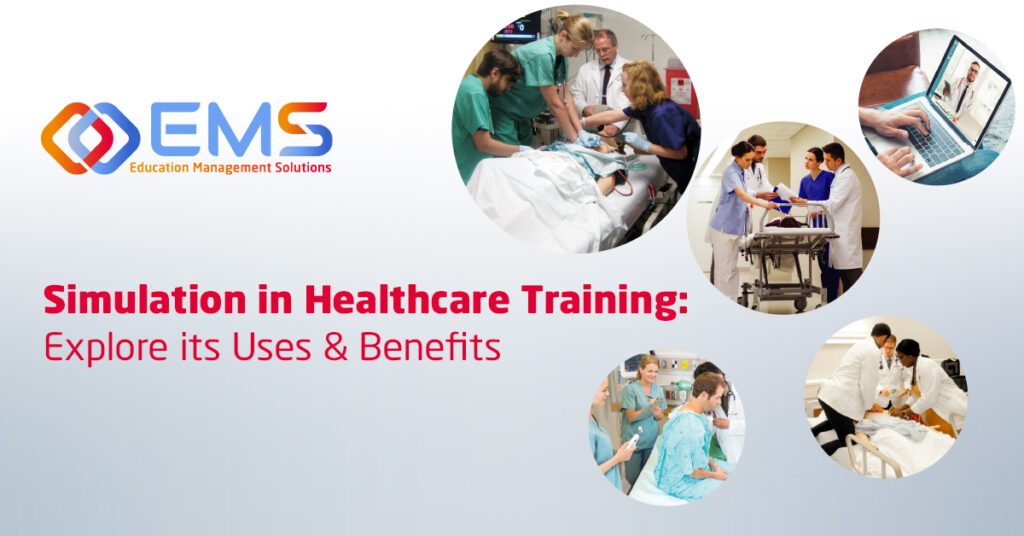Simulation in healthcare is a remarkably effective method for achieving medical training objectives through experiential learning. The ultimate aim of healthcare simulations is to elevate the learning experience, foster engagement, and improve outcomes by immersing participants in lifelike scenarios, all complemented by comprehensive feedback and debriefing sessions.
According to a study by Cureus, the worldwide healthcare simulation market is projected to reach an estimated value between $3.19 billion to $7.7 billion by 2027, with a compound annual growth rate expected to range from 14.6% to 17.8%1.
This evolution in healthcare training is characterized by a variety of simulation methods, each designed to enable healthcare professionals to master Entrustable Professional Activities (EPAs) and core competencies. These simulations utilize advanced technology to create immersive and lifelike experiences, mirroring the complexities of real-world healthcare scenarios.
This transformation not only equips healthcare professionals with the necessary expertise for patient care but also nurtures a patient-centric culture that places a strong emphasis on safety, empathy, and effective communication. It represents a harmonious blend of technology and human touch, reshaping healthcare training and elevating the quality of care delivered to patients worldwide.
How Is Simulation Being Used in Healthcare Training?
Simulation plays a vital role in modern healthcare training, offering diverse approaches tailored to the specific learning objectives. These methods include:
1. Partial Task Trainers:
Partial task trainers are specialized simulators designed to facilitate the practice of specific clinical skills. These simulators replicate real-world scenarios and are particularly effective for teaching discrete clinical skills, such as endotracheal intubation or venous cannulation.
2. Virtual Realty (VR):
VR technology is revolutionizing healthcare training and therapy. Learners are immersed in highly realistic clinical environments that closely resemble real-world settings. Using advanced technology, VR enables trainees to simulate physical interactions within settings like operating rooms or intensive care units.
3. Full-Scale Simulators:
Full-scale simulators employ computerized full-body mannequins that emulate patients. They respond physiologically to the actions of learners during comprehensive simulation training. These simulators are widely used for teaching essential clinical skills, encompassing both physical and diagnostic techniques.
4. In-Situ Simulations
In-situ simulations are conducted within authentic clinical environments, involving real healthcare practitioners. These simulations are invaluable for improving reliability and safety in high-stress, high-risk healthcare settings. By practicing in their natural work environment, healthcare professionals can enhance their preparedness for real-life situations.
Benefits of Simulation in Healthcare Training
The adoption of Simulation in healthcare training is a highly valuable and essential component of healthcare education. The following benefits underscore the growing significance of using Simulation for training in the healthcare industry:
Safe Hands-On Learning: Simulation provides a safe environment for healthcare learners to acquire and refine their skills without any risk to patients or staff. This is especially crucial for practicing high-risk, low-frequency procedures that might be rare in real clinical settings.
Real-Life Preparedness: Simulated scenarios closely mimic real-life situations, allowing learners to apply theoretical knowledge in a practical context. This bridges the gap between theory and practice, fostering confidence in handling complex medical procedures.
Learning from Mistakes: Simulation in healthcare allows learners to make mistakes and witness their consequences without any harm to actual patients. This experiential learning approach is invaluable for understanding the implications of actions and improving decision-making.
Enhanced Feedback and Evaluation: Simulations offer the advantage of real-time feedback and evaluation. Video recordings of debriefs and reviews enable learners to reflect on their performance, identify areas for improvement, and receive corrections when necessary.
Customized Learning: Simulation allows for tailored learning experiences that accommodate the unique needs of different learners. This level of customization is often challenging to achieve in real-world clinical settings, making simulation an excellent tool for addressing diverse training requirements.
Simulation in healthcare training not only equips healthcare professionals with the skills they need to respond effectively in real healthcare settings, but also offers several additional advantages. It fosters a culture of continuous improvement, enhances teamwork, and supports clinical decision-making.
As technology continues to advance, simulation training in healthcare becomes even more efficient and effective, benefiting both medical students and experienced healthcare professionals.

